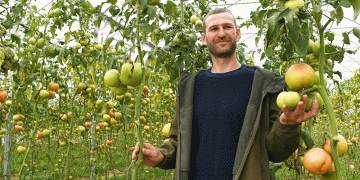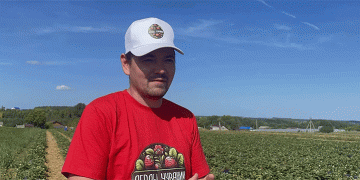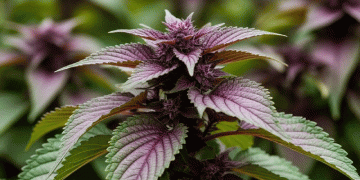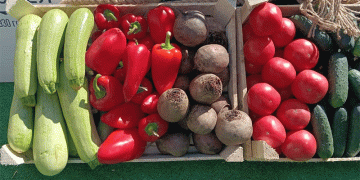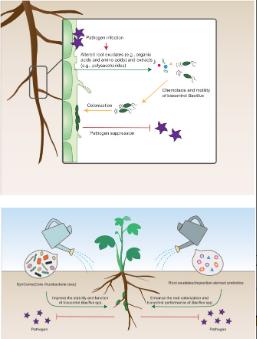Currently, the typical and widely used biocontrol agents mainly include bacterial Bacillus spp., Pseudomonas spp., Streptomyces spp., and Burkholderia spp., and fungal Trichoderma spp. and Penicillium spp. In particular, the genus Bacillus represents a large group of rod-shaped, endospore-forming, and catalase-positive bacteria that can be isolated from a large variety of ecological niches, such as soil, rhizosphere, compost, fermented food, and clinical specimens. With the advantages of secreting diverse secondary metabolites, excellent root colonization, and sporulation ability, Bacillus spp. and their derivative products have been widely used for the biocontrol of plant pathogens. Accompanied by the successful application of Bacillus spp. in suppressing soilborne and foliar diseases, the underlying biocontrol mechanisms have been intensively studied. Firstly, the biocontrol mechanisms of plant pathogens by Bacillus agents, including both direct and indirect manners, are addressed in this review. Plant hosts are known to actively recruit or stimulate biocontrol agents to resist pathogen invasion, and this “cry for help” scenario is emphatically introduced.
As commonly used biocontrol agents, Bacillus spp. engages a number of patterns to protect plants from various pathogens. Since the traditional biocontrol mechanisms by Bacillus spp., including antibiosis, competition, and induced systemic resistance (ISR), have been comprehensively summarized in several recent reviews, these sections are briefly addressed in this review. Comparatively, two novel mechanisms as interfering with pathogen quorum sensing (QS) and reshaping of the soil microbiome are emphatically discussed in detail.
Bacillus spp. can synthesize a large variety of secondary metabolites for direct inhibition of plant pathogens, including antimicrobial peptides (AMPs), polyketides, lytic enzymes, and volatiles, where the related functional genes can account for approximately 5%–10% of the whole genome.
The induction of virulence genes in many pathogenic bacteria relies on QS system that monitors the population density. Accordingly, several Bacillus agents are able to interfere with QS regulation to suppress pathogen invasion and reduce disease incidence, which is known as quorum quenching (QQ;). Interruption of pathogen QS by Bacillus spp. generally includes impeding signals’ transduction and enzymatic hydrolyzing/inactivating the signals.
The complex plant-associated microbiota forms a holobiont with the host, which is referred to as the second genome of the plant and is crucial for plant health. Several recent studies have demonstrated that Bacillus agents can regulate the indigenous rhizosphere microbiome, such as stimulating specific taxa with direct biocontrol activity and cooperative performance with other beneficial microbes, to enhance plant disease suppression.
Plant colonization and community assemblage by rhizosphere microbiome depend on several key steps such as uptake of plant metabolites, chemotaxis and cell motility, and biofilm production, which are manipulated by specific compounds in the released root exudates (e.g., carbohydrates and organic acids). Intriguingly, during the lengthy coevolutionary period between plant and microbiome, the host has adapted to biotic stress by an active assemblage of health-promoting microbiota, which is an enhanced recruitment of beneficial microbes than ordinary state. This phenomenon is called the “cry for help” mechanism and provides a mechanistic explanation for plant feedback to pathogen invasion. Root exudates are acknowledged to be extremely crucial for recruiting biocontrol agents in response to plant diseases.
The use of Bacillus strains and their derived products for the biocontrol of plant disease has achieved certain benefits worldwide. However, practical utilization of these agents is usually confronted with unstable disease suppression efficacy under field conditions, which limits the application and extension of biocontrol products. Complicated and dynamic factors, such as soil characteristics, plant genotypes, and indigenous microbiota, can all influence the colonization and functional efficacy of inoculated Bacillus agents.
Source: Zhang, N., Wang, Z., Shao, J., Xu, Z., Liu, Y., Xun, W. et al. (2023) Biocontrol mechanisms of Bacillus: Improving the efficiency of green agriculture. Microbial Biotechnology, 16, 2250–2263. Available from: https://doi.org/10.1111/1751-7915.14348
















